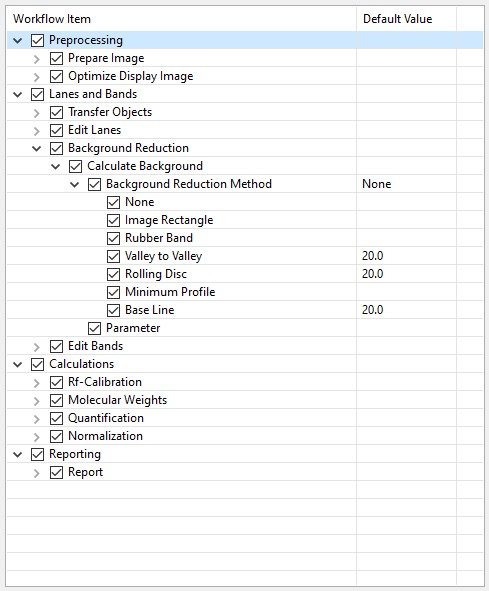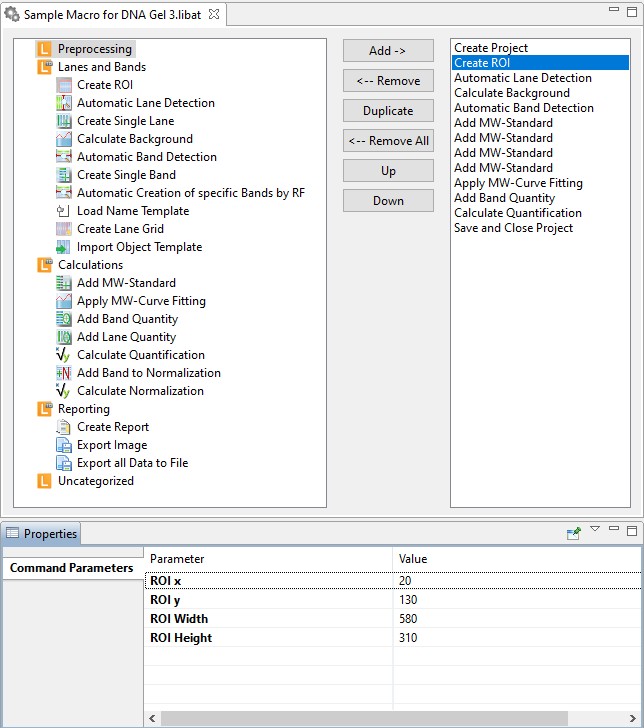LabImage 1D is a software solution developed by Kapelan Bio-Imaging for the quantification of 1D gels and Western blots. Great attention is paid to high quality image analysis and comprehensive reporting. But also the automation of repetitive processes is an important core function of LabImage 1D. It allows the entire evaluation process to be accelerated and at the same time ensures that identical parameters and comparable criteria are used when analyzing a series of measurements. This is particularly useful when different people are involved in the evaluation of the data. The definition of fixed and automatically executed work steps is flexible and intuitive. For this purpose, LabImage 1D has many functions that can be individually adapted to the specific requirements of the respective user.
After a project has been started, individual automated processes can be selected and adapted manually. In this workflow, the user is guided step by step through the process. The individual functions are arranged logically so that they can be used intuitively. Here you will find basic process steps for preparing the image file, such as rotation, mirroring or inversion. The next step is the exact definition of the sections to be analyzed. In this way, bands or tracks can be captured manually or automatically and adjusted as required. In addition, just a few clicks make it possible to reduce the image background. Now that all regions have been defined, the quantitative analysis of the selected image sections (ROI) takes place. Here, for example, the bands can be automatically related to the respective marker used, so that the size of the detected sample is displayed directly. The software analyzes the gray scales of the selected area and shows exactly at which positions deflections of which strength can be detected. The user thus receives a detailed analysis and can simultaneously check and, if necessary, adjust each individual step before the final analysis result is saved. In this way, the user retains full control over the evaluation, which can, however, become tedious and lengthy if many similar image files have to be analyzed.

For this case, macros offer the perfect solution, because they allow a fast and fully automated evaluation. A macro describes the automated sequence of previously defined work steps. In this way, all functions from the workflow can be individually combined in any sequence and stored as a flow protocol. When this protocol is applied to an image file, all work steps are performed automatically and the result is presented. Tedious manual input is then no longer necessary. All measurement data is not only evaluated quickly, but also reliably and according to absolutely constant criteria. In this way, entire image stacks can be analyzed completely automatically in a very short time. If the automated quantification process requires manual control at critical points, a stop point can be set at any point in the respective protocol. The automated process is then interrupted at this point and the settings can be checked and optimized if necessary. If all parameters are valid, the protocol is continued by mouse click.
The automations with LabImage 1D result in enormous time savings and ensure constant analysis conditions. All parameters can be individually adapted and adjusted to the respective needs and requirements of the user. This enormous flexibility is a core resource of LabImage 1D, from which users from the most diverse areas of laboratory diagnostics benefit.

